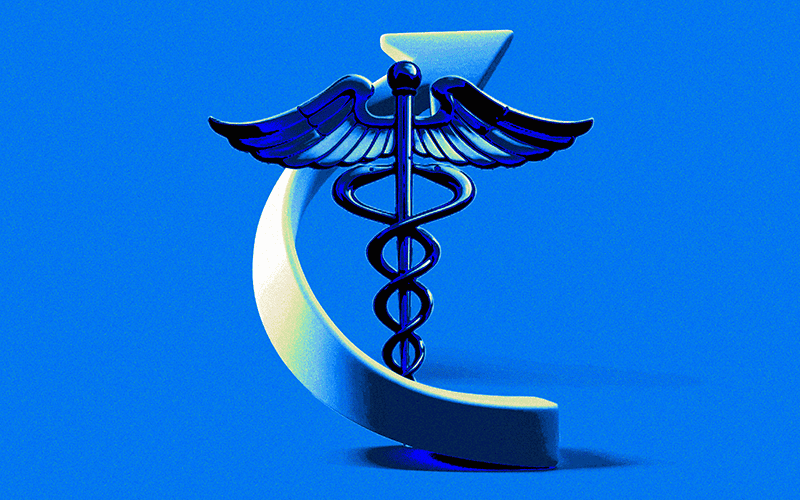Maintaining wellness amid change: Healthcare trends we’re watching

Relatively few industries touch nearly everyone in America—but healthcare is one of them.
Whether it’s the rising cost of medical care, the challenge of finding a primary care physician, or deciding whether to get a flu shot, healthcare decisions are a great equalizer. Changes in this industry can significantly impact all of us, so what’s on the horizon for the next 12 months? More than we have time to cover here, so let’s focus on five trends we’ll be watching throughout 2025.
Ongoing shortage of healthcare professionals
The federal Health Resources and Services Administration (HRSA) released their most recent projections at the end of 2024 and, unfortunately, one of the top trends that continues from previous years is the continuing shortage of healthcare workers of all types—from nurses to medical assistants, behavioral health providers, and long-term care workers. And the shortages have geographic disparities, being more severe for rural and “non-metropolitan” areas than for urban areas.
For example, in 2027, non-metro areas are projected to face a 24% shortage of registered nurses, compared to a 7% shortage in metropolitan regions.
The Martin Group is currently working with a client to raise awareness of a program designed to address these shortages. The Caring Gene® Career Pathways Training (CPT) Program is administering a New York State (NYS) program that will invest $646 million over the next three years to build a robust healthcare workforce pipeline in the Empire state by covering 100% of tuition, books, and licensing fees for NYS residents who want to enter or advance in healthcare careers. By participating in the program, students in a variety of job titles (from licensed mental health counselors to respiratory therapists to associate registered nurses) commit to work after graduation for three years in a NYS healthcare organization with at least a 30% Medicaid or uninsured payor mix, thus increasing access for all New Yorkers, including the most vulnerable.
Improving outcomes with advanced technologies
Artificial intelligence (AI) is no longer the new kid on the block, but it is still revolutionizing the way healthcare is delivered and the positive outcomes that can be achieved through its use. With the shortage of healthcare providers, AI-powered medical scribe technology allows clinicians to see more patients and focus their efforts on the face-to-face interaction rather than taking notes during those appointments.
Disease diagnosis is also being transformed as AI helps clinicians interpret imaging results like colonoscopies more quickly, leading to earlier interventions and better prognoses. Other technologies continue to improve the convenience and quality of patient care as well. Wearable devices and home-based sensors, for example, help patients manage their chronic conditions and provide clinicians with real-time data, all without the need for an in-person office visit.
Value-based care and the shift to ambulatory settings
While the value-based care model—which essentially reimburses providers for quality outcomes versus paying a “fee-for-services”—has been around for years, what is new is the significant shift it is causing from inpatient care to the ambulatory setting.
Clinical studies published by the National Institutes of Health have shown similar or better outcomes for numerous surgeries performed in ambulatory settings with greatly reduced costs, so healthcare executives are taking note. As a result, numerous healthcare systems are partnering with, acquiring, or opening their own Ambulatory Surgery Centers (ASCs) and considering these ventures integral to their financial stability. Patients also seem to be favoring ASCs for the convenience and more personalized attention they provide.
Increasing costs for all sectors
All players in the healthcare industry (providers, payors, and patients) are experiencing the effects of rising costs. The Centers for Medicare & Medicaid Services’ most recent report on U.S. National Healthcare Expenditure shows that healthcare expenditures grew 7.9% to $4.9 trillion per year, more than $14,500 per person and 17.6% of Gross Domestic Product. Much of the increase has come from inflationary pressures, including the cost of supplies and labor, along with higher prescription drug prices (including popular weight-loss drugs) and greater spending on much-needed behavioral health services.
These mounting financial pressures highlight the need for disruption and transformation (provided by AI and other technologies) for greater health outcomes and better health nationwide.
Regulatory uncertainty
Finally, with a new administration in the White House and Republican control of both houses of Congress, there remains great uncertainty in the healthcare landscape in Washington, D.C. on issues ranging from the Affordable Care Act to the administration of Medicare, Medicaid, and medical debt reforms.
What is clear is that new secretaries of cabinet departments, as well as new Congressional leadership on key healthcare committees, will be examining and weighing in with their points of view on a variety of programs that affect the health and well-being of all Americans. The American Hospital Association encourages all citizens to stay involved and make their voices heard about what’s to come in healthcare.
Want to learn more about The Martin Group’s work within multiple facets of healthcare? Click here.
